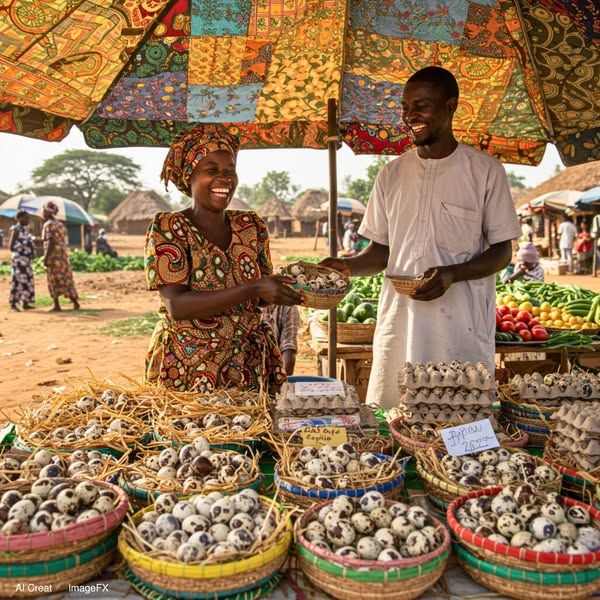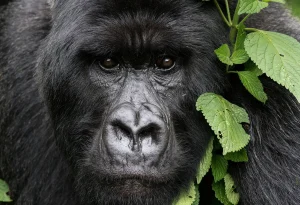Local markets in East Africa are more than just places to shop — they are vibrant hubs of culture, trade, and community. Kigali, Kampala, and Nairobi each host bustling markets where locals and visitors come together to experience daily life, discover fresh produce, find unique crafts, and learn about traditions passed down through generations. Whether you are interested in souvenirs, African fabrics, handmade jewelry, or second-hand clothes, these markets are the heartbeat of urban East Africa. This guide takes you through the most notable markets in each city, answers common questions, and offers practical tips to make your visit both enjoyable and memorable. Visiting Local Markets.
What is the most popular market in Kigali?
The most popular market in Kigali is Kimironko Market, located in the northeastern part of the city. It is considered the beating heart of Kigali’s commercial life. Kimironko Market is where residents go for everyday shopping, and it is also where travelers can immerse themselves in local life. Visitors will find stalls overflowing with colorful kitenge fabrics, fresh vegetables, tropical fruits, and artisanal crafts. The market is also a great place to interact with tailors who can create custom-made clothing from African fabrics while you wait. Its popularity comes from the diversity of products, affordable prices, and its role as a central meeting place for the community. Visiting Local Markets.
Which market is best for souvenirs in Kigali?
If you are looking for souvenirs in Kigali, Kimironko Market stands out as the best choice. The market offers a wide variety of items that represent Rwanda’s culture, including woven baskets, hand-carved masks, traditional drums, and jewelry made from beads. Another spot worth visiting is the Caplaki Craft Village, although it is more tourist-oriented than Kimironko. Still, for authentic pieces at fair prices, Kimironko Market remains the most reliable. Bargaining is part of the experience, but prices here are generally reasonable, making it a favorite among both locals and international visitors. Visiting Local Markets.
Where can I buy African fabrics in Kigali?
African fabrics, especially kitenge, are one of the most sought-after items in Kigali’s local markets. Kimironko Market is the primary destination for buying these fabrics. Vendors stock materials imported from different parts of Africa, including Ghana, Tanzania, and the Democratic Republic of Congo. Once purchased, customers can visit nearby tailoring stalls within the market to have dresses, shirts, or traditional outfits custom-made. The combination of fabric shopping and tailoring makes Kigali one of the best places in the region to buy unique clothing.
What can you find at Nakasero Market in Kampala?
Nakasero Market is one of Kampala’s most famous local markets, known for its wide variety of fresh produce and household goods. Visitors can explore stalls filled with fruits, vegetables, spices, herbs, and flowers. The market is particularly famous for its rich selection of tropical fruits such as mangoes, pineapples, jackfruit, and passion fruit. Beyond produce, there are vendors selling electronics, textiles, and general household items. Nakasero Market is a lively place where visitors get to experience the vibrant atmosphere of Ugandan daily life while also finding essential goods and local specialties.
Which market in Kampala is famous for second-hand clothes?
The most famous market in Kampala for second-hand clothes is Owino Market, officially known as St. Balikuddembe Market. It is one of the largest and busiest markets in Uganda, attracting thousands of shoppers every day. Owino is especially well-known for its massive selection of “mitumba” (second-hand clothes imported from abroad). From branded jeans and shoes to children’s clothes and formal wear, shoppers can find nearly anything at bargain prices. Owino Market is not only popular with locals but also with visitors looking for unique finds at low cost. However, navigating the market requires patience as it is often crowded and busy.
Where is Owino Market located in Kampala?
Owino Market is located near Kampala’s central business district, making it easily accessible from different parts of the city. It sits close to the Nakivubo Stadium area. The market is vast and spread across several sections, covering clothing, shoes, household goods, and food stalls. Its central location and wide range of goods make it a must-visit destination for anyone wanting to experience Kampala’s authentic market scene.
What day is the Maasai Market in Nairobi open?
The Maasai Market in Nairobi operates on a rotating schedule, appearing at different locations in the city on different days of the week. This open-air market is the most popular place to buy Maasai beadwork, jewelry, and handicrafts. For example:
- Tuesdays: Kijabe Street parking lot.
- Fridays: Village Market.
- Saturdays: High Court parking lot.
- Sundays: Yaya Centre.
Travelers often plan their visit around these days to ensure they can access the market. The Maasai Market is one of Nairobi’s most tourist-friendly shopping experiences.
Which is the best market for souvenirs in Nairobi?
The best market for souvenirs in Nairobi is the Maasai Market, thanks to its large collection of traditional crafts. Shoppers will find handmade beadwork, carved figurines, paintings, leather sandals, and colorful fabrics. Vendors are mostly artisans or traders who work directly with local communities, which means purchases support Kenyan craftsmanship. Another option is the City Market, located in the central business district, which is known for curios, traditional art, and even fresh flowers. Between these two, Maasai Market is the most recommended for visitors looking for unique keepsakes.
Where can I buy beadwork and jewelry in Nairobi?
Beadwork and jewelry are some of Nairobi’s most iconic souvenirs, and the Maasai Market is the top destination to buy them. Maasai women are renowned for their intricate bead designs, which carry cultural significance. Necklaces, bracelets, and earrings made from beads are available in a wide range of colors and patterns. The City Market is also a good option for jewelry shopping, although prices may be slightly higher. Bargaining is expected in both markets, and visitors should take time to explore multiple stalls before making a purchase.
Which market in Nairobi is best for second-hand clothes?
For second-hand clothes, Gikomba Market is the largest and most popular in Nairobi. It is known across Kenya for its enormous selection of second-hand clothes imported from abroad. Vendors sell everything from casual wear to formal attire, shoes, and children’s clothing. While the market is busy and requires careful navigation, it is the best place to find quality clothes at very low prices. Gikomba attracts both bulk buyers and individual shoppers, making it one of the busiest markets in East Africa.
How much should I expect to bargain in East African markets?
Bargaining is a common practice in markets across Kigali, Kampala, and Nairobi. Visitors should expect initial prices to be marked higher, especially in tourist-oriented markets. A good rule of thumb is to offer around 50–60% of the initial asking price and negotiate until both parties agree. In food markets, bargaining is less common, but in craft and clothing markets, it is expected. Bargaining is not only about lowering prices but also about engaging with the local culture and interacting respectfully with vendors.
Are local markets in Kigali, Kampala, and Nairobi safe for tourists?
Local markets are generally safe, but visitors should take basic precautions. Crowded markets like Owino in Kampala or Gikomba in Nairobi are hotspots for pickpocketing. It is advisable to carry minimal cash, keep valuables secure, and avoid flashy jewelry or electronics. Markets in Kigali are relatively calmer and more organized compared to Kampala and Nairobi. Visiting during daylight hours is recommended, and if possible, going with a local guide can enhance both safety and the overall experience.
What should I avoid when shopping in African markets?
When shopping in African markets, avoid carrying large sums of money or showing valuables in public. It is also best to avoid buying wildlife products or anything that could be illegal to transport internationally. Be cautious with food purchases if you are unfamiliar with local preparation or hygiene practices. Lastly, avoid rushing through the experience; taking your time to engage with vendors and ask questions often results in better purchases and fairer prices.
What currency is used in Kigali, Kampala, and Nairobi markets?
- Kigali, Rwanda: Rwandan Franc (RWF)
- Kampala, Uganda: Ugandan Shilling (UGX)
- Nairobi, Kenya: Kenyan Shilling (KES)
Markets in all three cities operate primarily in local currency, so it is important to exchange money before visiting. While mobile money platforms like M-Pesa in Kenya and MTN Mobile Money in Uganda are widely used by locals, cash is still the most accepted form of payment in open-air markets. U.S. dollars are sometimes accepted in tourist-heavy areas, but rates are less favorable.
What is the best time to visit local markets in East Africa?
The best time to visit local markets is in the morning, when stalls are fully stocked and the atmosphere is vibrant but less crowded. Morning visits also allow shoppers to pick the freshest produce and have more time to negotiate prices. Weekends are the busiest, particularly in Nairobi’s Maasai Market, which is a popular destination for both locals and tourists. Visiting early also ensures a safer and more comfortable experience, as crowds and traffic tend to increase later in the day.
Final Thoughts
Visiting local markets in Kigali, Kampala, and Nairobi offers more than just shopping — it is a window into East African culture, traditions, and everyday life. From the colorful fabrics of Kigali’s Kimironko Market to the bustling second-hand stalls of Kampala’s Owino Market and the beadwork treasures of Nairobi’s Maasai Market, each city presents a unique market culture worth experiencing. With the right preparation, an open mind, and respect for local customs, exploring these markets becomes one of the most memorable parts of any East African journey. Visiting Local Markets.




